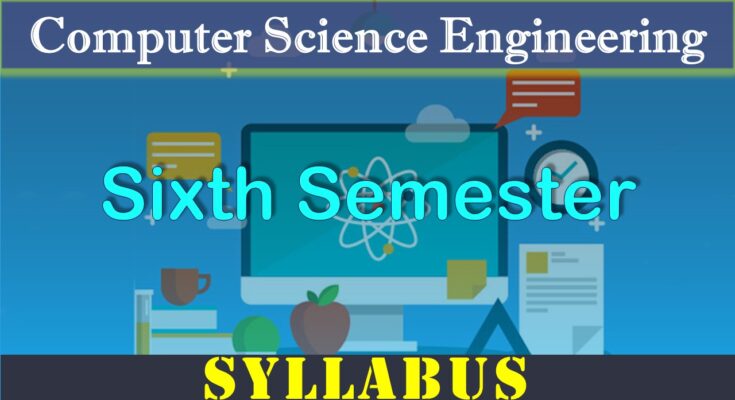Syllabus B Tech Computer Science Sixth Semester Machine Learning CS601
The concepts developed in this course will aid in quantification of several concepts in Computer Science Engineering that have been introduced at the Engineering courses. Technology is being increasingly based on the latest Syllabus B Tech Computer Science Sixth Semester Machine Learning CS601 is given here.
The objective of this course “Syllabus B Tech Computer Science Sixth Semester Machine Learning CS601“ is to develop ability and gain insight into the process of problem-solving, with emphasis on thermodynamics. Specially in following manner: Apply conservation principles (mass and energy) to evaluate the performance of simple engineering systems and cycles. Evaluate thermodynamic properties of simple homogeneous substances. Analyze processes and cycles using the second law of thermodynamics to determine maximum efficiency and performance. Discuss the physical relevance of the numerical values for the solutions to specific engineering problems and the physical relevance of the problems in general and Critically evaluate the validity of the numerical solutions for specific engineering problems. More precisely, the objectives are:
- To enable young technocrats to acquire mathematical knowledge to understand Laplace transformation, Inverse Laplace transformation and Fourier Transform which are used in various branches of engineering.
- To introduce effective mathematical tools for the Numerical Solutions algebraic and transcendental equations.
- To acquaint the student with mathematical tools available in Statistics needed in various field of science and engineering.
CS 601 – Machine Learning
Practical List
Different problems to be framed to enable students to understand the concept learnt and get hands-on on various tools and software related to the subject. Such assignments are to be framed for ten to twelve lab sessions.
Books Recommended
1. Christopher M. Bishop, “Pattern Recognition and Machine Learning”, Springer-Verlag New York Inc., 2nd Edition, 2011.
2. Tom M. Mitchell, “Machine Learning”, McGraw Hill Education, First edition, 2017.
3. Ian Goodfellow and Yoshua Bengio and Aaron Courville, “Deep Learning”, MIT Press, 2016
5. Aurelien Geon, “Hands-On Machine Learning with Scikit-Learn and Tensorflow: Concepts, Tools, and Techniques to Build Intelligent Systems”, Shroff/O’Reilly; First edition (2017).
6. Francois Chollet, “Deep Learning with Python”, Manning Publications, 1 edition (10 January 2018).
7. Andreas Muller, “Introduction to Machine Learning with Python: A Guide for Data Scientists”, Shroff/O’Reilly; First edition (2016).
8. Russell, S. and Norvig, N. “Artificial.


